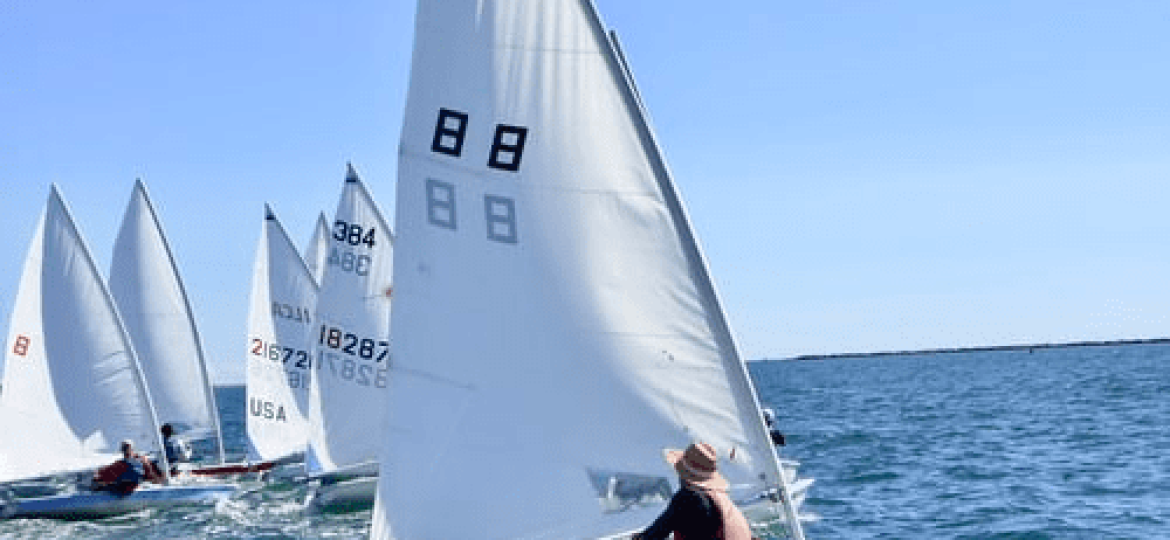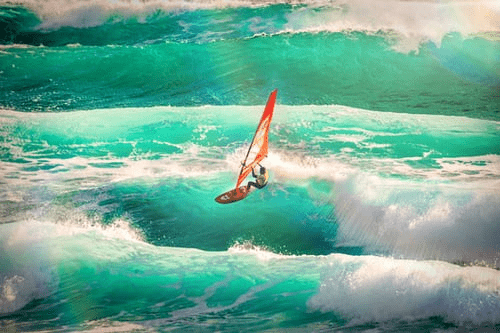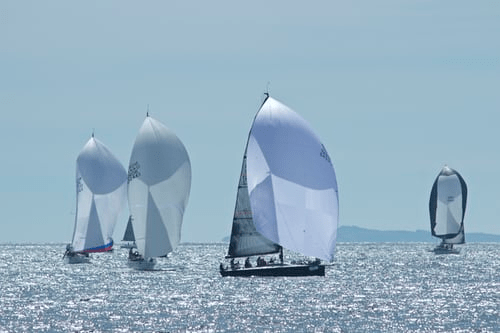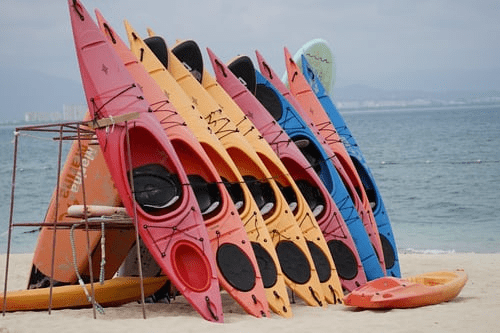Sailing
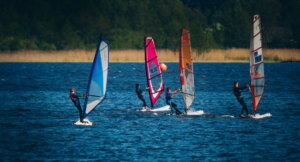
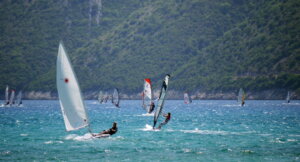
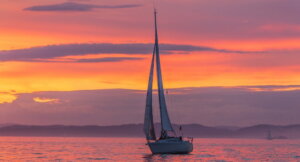
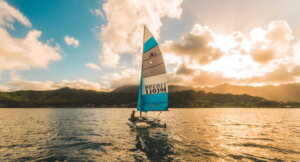
Sailing is the activity of moving through water using a boat or ship propelled by wind power, either by using the wind to drive sails or by using a motor. It is a popular recreational activity, as well as a competitive sport, with many different types of boats and yachts used for different purposes.
Sailing is the activity of moving through water using a boat or ship propelled by wind power, either by using the wind to drive sails or by using a motor. It is a popular recreational activity, as well as a competitive sport, with many different types of boats and yachts used for different purposes.
Sailing is the activity of moving through water using a boat or ship propelled by wind power, either by using the wind to drive sails or by using a motor. It is a popular recreational activity, as well as a competitive sport, with many different types of boats and yachts used for different purposes.
Sailing is the activity of moving through water using a boat or ship propelled by wind power, either by using the wind to drive sails or by using a motor. It is a popular recreational activity, as well as a competitive sport, with many different types of boats and yachts used for different purposes.
Sailing is the activity of moving through water using a boat or ship propelled by wind power, either by using the wind to drive sails or by using a motor. It is a popular recreational activity, as well as a competitive sport, with many different types of boats and yachts used for different purposes.
Sailing is the activity of moving through water using a boat or ship propelled by wind power, either by using the wind to drive sails or by using a motor. It is a popular recreational activity, as well as a competitive sport, with many different types of boats and yachts used for different purposes.
Sailing is the activity of moving through water using a boat or ship propelled by wind power, either by using the wind to drive sails or by using a motor. It is a popular recreational activity, as well as a competitive sport, with many different types of boats and yachts used for different purposes.
Sailing is the activity of moving through water using a boat or ship propelled by wind power, either by using the wind to drive sails or by using a motor. It is a popular recreational activity, as well as a competitive sport, with many different types of boats and yachts used for different purposes.
Sailing is the activity of moving through water using a boat or ship propelled by wind power, either by using the wind to drive sails or by using a motor. It is a popular recreational activity, as well as a competitive sport, with many different types of boats and yachts used for different purposes.
Sailing is the activity of moving through water using a boat or ship propelled by wind power, either by using the wind to drive sails or by using a motor. It is a popular recreational activity, as well as a competitive sport, with many different types of boats and yachts used for different purposes.
Sailing is the activity of moving through water using a boat or ship propelled by wind power, either by using the wind to drive sails or by using a motor. It is a popular recreational activity, as well as a competitive sport, with many different types of boats and yachts used for different purposes.
The basic principle of sailing is to harness the power of the wind to move a boat through the water. This is done by using sails, which are large sheets of fabric that are attached to a mast and rigged in such a way that they can be adjusted to catch the wind. The sailor use a variety of ropes and pulleys, called lines or sheets, to control the sails and steer the boat.
Sailing can be divided into two main categories: racing and cruising. Racing sailboats are typically smaller and faster, built for speed and maneuverability. They are used in competitive sailing events, such as regattas and yacht races. Cruising sailboats, on the other hand, are designed for comfort and long-distance travel. They are typically larger and more stable, with amenities such as cabins, kitchens, and bathrooms.
Different types of sailboats include dinghies, keelboats, catamarans, and trimarans. Dinghies are small, lightweight boats that are typically used for racing or as tenders for larger boats. Keelboats are larger boats with a fixed keel that provides stability and allows them to sail upwind. Catamarans and trimarans are multihulled boats, with two or three hulls respectively, that are known for their speed and stability.
Sailing can be enjoyed by people of all ages and skill levels. It is a great way to enjoy the outdoors, experience the beauty of nature, and improve fitness and coordination. There are many different ways to get involved in sailing, such as taking lessons, joining a sailing club, or chartering a boat. Sailing lessons can teach you the basics of sailing, including boat handling, sail trim, and safety. Joining a sailing club can provide the opportunity to sail with other enthusiasts, as well as access to boats and equipment. Chartering a boat allows you to experience sailing without having to own a boat, and can be a great way to try different types of boats and sailing destinations.
In addition to recreational sailing, there are also many opportunities to compete in sailing. There are a wide variety of sailing competitions and events, including regattas, yacht races, and match racing. These events can range from local, small-scale events to international, high-profile competitions.
Sailing can also be a great way to travel. Many people enjoy the freedom and adventure of sailing to different destinations, whether it be around the coast or across the ocean. Sailing also allows you to experience unique cultures and landscapes, and it can be a great way to bond with friends and family.
Sailing gear refers to the equipment and clothing that is used by sailors while on the water. This gear is designed to keep sailors safe and comfortable, and to help them navigate and control their boats. Some of the most common types of sailing gear include:
Life jacket: A life jacket is an essential piece of safety gear that is worn by sailors to keep them afloat in case of an emergency. They are available in different styles and sizes, and they are designed to provide buoyancy and support while on the water.
Wet suit or drysuit: A wet suit or drysuit is a type of protective clothing that is worn by sailors to keep them warm and dry while on the water. Wet suits are made of neoprene and are designed to trap a thin layer of water between the suit and the skin, which is then heated by the body to keep the sailor warm. Dry suits are similar to wet suits but they are completely sealed, preventing water from entering and keeping the sailor dry.
Sailors hat and sunglasses: A sailor hat and sunglasses are important to protect the sailors from the sun’s rays. They are designed to provide shade for the face, head and eyes and to prevent sunburn and glare.
Gloves: Sailing gloves are worn to protect the hands from the sun, wind, and water. They also provide a better grip on the ropes, which can be very important in bad weather or high winds.
Boots or shoes: Sailors boots or shoes are designed to provide good grip and support on the boat’s deck. They should also be waterproof and provide protection from the sun and wind.
Safety harness: A safety harness is a piece of equipment that is worn by sailors to keep them attached to the boat in case of an emergency. This allows sailors to move around the boat freely while still being connected to the boat.
Personal flotation device (PFD) : It is a life saving device that is worn by sailors to keep them afloat in case of an emergency, it is similar to a life jacket but is designed to be more comfortable, less restrictive and it is worn as a waistcoat or belt.
Emergency beacon or distress signal: This device is designed to send an emergency signal to rescue teams in case of an emergency. It can be activated manually or automatically and it can be used to send a distress signal, location, and other information to help rescuers locate the boat and sailors.
Navigation equipment: Navigation equipment such as a compass, chart, and GPS device are essential for sailing, they are used to find the boat’s position, direction and plan the course.
Communication equipment: Communication equipment such as a VHF radio, or an emergency beacon, can be used to communicate with other boats, shore-based authorities, and rescue teams. This is important for safety and for staying in contact with other sailors.
Anchors and lines: Anchors and lines are used to secure the boat to the seafloor, they are essential for safety and can be used to keep the boat in a specific location or to prevent it from drifting away.
Ropes and rigging: Ropes and rigging are used to control the sails and to steer the boat. They are an essential part of sailing and are used to adjust the sails and to control the boat’s movement.
Maintenance and repair equipment: Sailors should also have the necessary tools and equipment to perform basic maintenance and repairs on their boats, such as a pump, a wrench, and a tool kit.
Overall, sailing gear is an essential part of sailing, and it is important for sailors to have the right equipment and clothing to stay safe, comfortable, and in control while on the water. It is also important to check and maintain the gear regularly to make sure it is in good working condition.
Sailing gear is an essential part of sailing, and it is important for sailors to have the right equipment and clothing to stay safe, comfortable, and in control while on the water!
There are several requirements that must be met in order to sail safely and legally. These requirements can vary depending on the location and type of sailing, but some of the most common include: Safety equipment: All boats must be equipped with certain safety equipment, such as life jackets, a sound-producing device, and emergency signaling equipment, such as flares. The safety equipment requirements can vary depending on the type and size of the boat, as well as the location and type of sailing. Licensing and registration: Many boats must be licensed and registered with the appropriate authorities. This can include obtaining a boat registration, as well as obtaining a boating safety certificate or license, if required by the local laws. Insurance: Many boat owners are required to have insurance for their boats in case of accidents or damage. This can include liability insurance, which covers damages or injuries caused to others, and hull insurance, which covers damages to the boat itself. Crew and passenger requirements: Some states or countries may have regulations regarding the number of passengers that can be on board, as well as the qualifications of the crew. This can include regulations on the number of life jackets, the number of people allowed on the boat, the age of the passengers, and the qualifications of the skipper. Environmental regulations: Boats must comply with environmental regulations to protect the waters and the marine life. This can include regulations on the disposal of waste, the use of certain types of fuel, and the use of certain types of propulsion. Navigation regulations: Boats must comply with navigation regulations to ensure safe navigation, such as following the rules of the road and giving way to other boats. They also need to be equipped with the necessary navigation equipment, such as a compass, charts, and GPS. Weather and sea conditions: Before setting sail, sailors should always check the weather forecast and sea conditions to ensure that it is safe to go out. They should also be aware of the potential hazards and know how to respond in case of an emergency. It is important for sailors to be aware of the specific requirements and regulations in their area, and to comply with them in order to sail safely and legally.
Trademark Disclaimer:
All trademarks, logos, and brand names are the property of their respective owners. All company, product, and service names used in this website are for identification purposes only. Use of these names trademarks, and brands do not imply endorsement.



